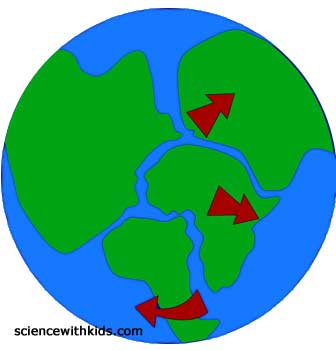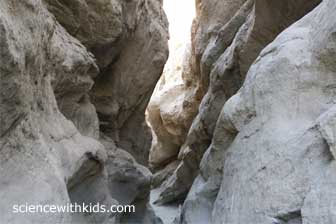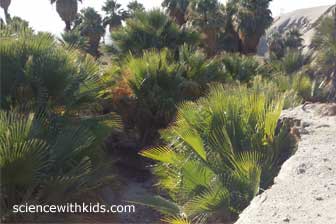Facts about Plate Tectonics
Understanding movement in the Earth's crust
Posted by Admin / in Science Facts

Facts about Plate Tectonics
- The Earth's crust and upper mantle below the crust are broken up into large solid plates.
- A majority of earthquake and volcanic activity occurs above plate boundaries.
- Movement of the Earth's plates is known as plate tectonics.
- Based on movement of the crust, scientists believe there are 15 separate major tectonic plates on the Earth.
- The largest tectonic plate on the Earth's crust is the Pacific Plate. It is also the tectonic plate responsible for almost 90 percent of the earthquakes in the world.
- Alfred Wegner, a German scientist, is considered the Father of plate tectonics.
- Many of the major land continents appear to fit together like a giant jig-saw puzzle.
- Scientists think that at one time the pieces of land were much closer or even part of a much larger land continent.
- Using GPS technology from space scientists have discovered that whole land continents or portions of continents on separate plates are moving each year. Scientists call this movement continental drift.
- Mountains and hills that were not formed by a volcano, show evidence of plate tectonics. Many mountains look like sections of rock are folded up like a deck of cards. Some areas of rock show layers of rock at different angles than other rock. These differences appear to be from bedrock layers pushing into each other on two sides of a fault. This is what happens when the plates push into each other.
- Other locations show what happens when two tectonic plates pull apart from each other. The Mid-Atlantic Ridge, located near the center of the Atlantic Ocean, pulls apart each year. The opening in the plates allows magma to escape to the surface. The surface happens to be the bottom of the ocean. Underwater there is volcanic activity as a result of the two plates pulling apart.
- At the tectonic plate boundaries (edges) there are cracks known as faults. For example the San Andreas Fault, is the boundary between the Pacific Plate and the North American Plate. The San Andreas fault is located on the west side of North America, traveling through California and Mexico in Baja California.
- Where two tectonic plates are pushing into each other, not only is rock pushed upward, underground water is pushed up from the pressure. In desert areas, an oasis may occur because of the tectonic plate movement at the fault. Water pushed up from the plates colliding is known as "fault gurgle".

This opening in the rock is located within the San Andreas fault zone in California.

This Oasis near Palm Springs, California, survives because of the fault gurgle feeding the water supply for the trees and vegetation.
